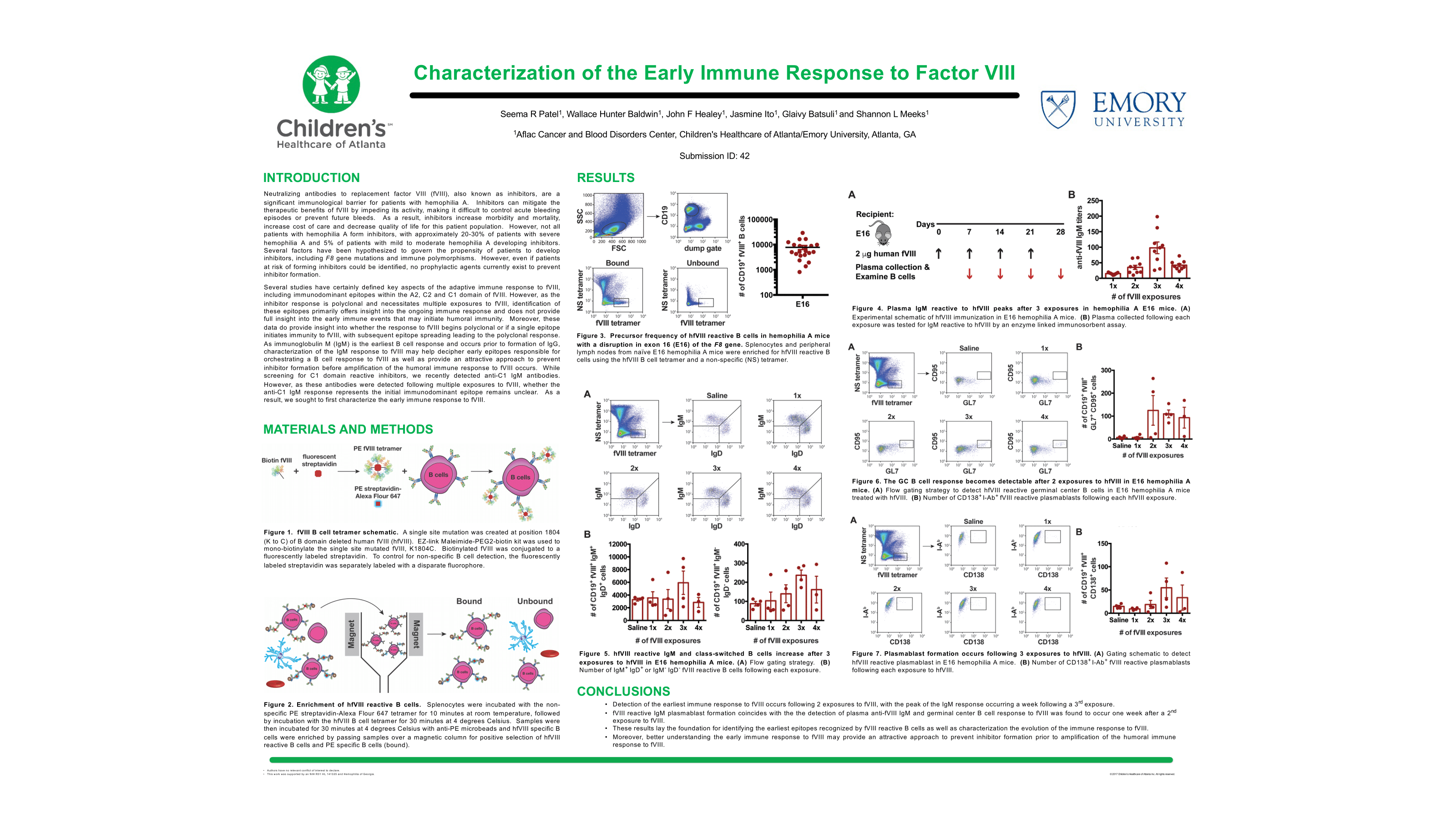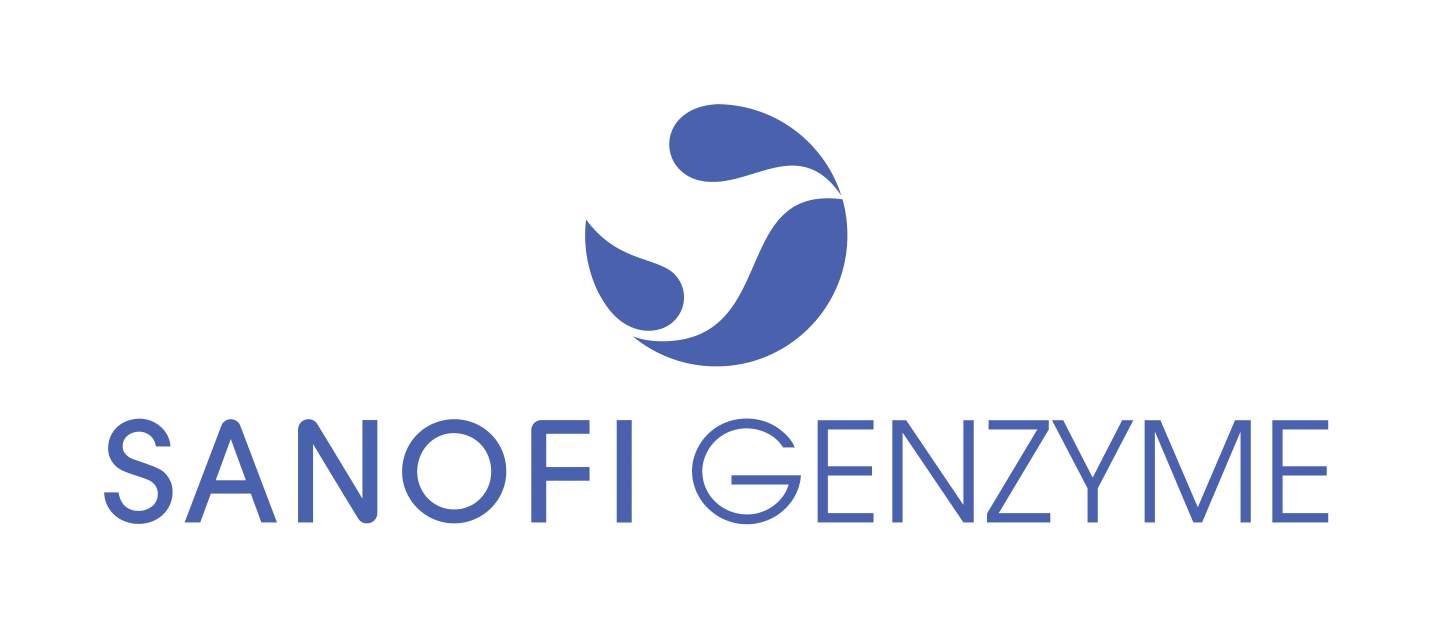National Hemophilia Foundation (NHF) - Posters
Characterization of the Early Immune Response to Factor VIII |
|
|
|

|
Objective:
Neutralizing antibodies to factor VIII (fVIII), called inhibitors, can mitigate the therapeutic benefits of fVIII.While inhibitors are known to primarily target the A2, C2 and C1 domain of fVIII, it is unclear whether the response to fVIII begins as polyclonal or if a single epitope initiates immunity to fVIII, with subsequent epitope spreading leading to the polyclonal response.As IgM occurs prior to an IgG response, characterization of the IgM response to fVIII may help decipher early epitopes responsible for orchestrating a B cell response to fVIII.While screening for C1 domain reactive inhibitors, we recently detected anti-C1 IgM antibodies.However, as these antibodies were detected following multiple exposures to fVIII, whether the anti-C1 IgM response represents the initial immunodominant epitope remains unclear.As a result, we herein sought to first characterize the early immune response to fVIII.
Methods:
Hemophilia A mice that are genetically deficient inexon 16 (E16) ofF8were administered 1-2?g recombinant fVIII weekly for four weeks via retro-orbital infusion.One week following each exposure to fVIII, plasma was collected for examination of anti-fVIII IgM and IgG titers by an enzyme linked immunosorbent assay and splenocytes were harvested for immunophenotyping using a fVIII B cell tetramer by flow cytometry.
Summary:
IgM reactive to fVIII was found to be detectable after two exposures to fVIII.However, the anti-fVIII IgM response did not peak until one week after the 3rdexposure.Likewise, the number of detectable IgM+B cells and plasmablast specific to fVIII were found to peak one week following a 3rdexposure to fVIII.Interestingly, fVIII specific germinal center B cells were detectable a week following the 1stexposure to fVIII, though the number of class-switched B cells reactive to fVIII did not peak until after the 3rdexposure, which also coincided with contraction of the IgM response to fVIII and detection of anti-fVIII IgG a week following the 4thexposure.
Conclusions:
Our data demonstratethat detection of the earliest immune response to fVIII occurs following two exposures to fVIII, with the peak IgM response occurring a week following a 3rdexposure.Moreover, though anti-fVIII IgG was detected following four exposures to fVIII, a germinal center B cell response to fVIII was found to occur one week after a 2ndexposure to fVIII.These results lay the foundation for identifying the earliest epitopes recognized by fVIII reactive B cells as well as characterization of the evolution of the immune response to fVIII.Moreover, better understanding the early immune response to fVIII may provide an attractive approach to prevent inhibitor formation prior to amplification of the humoral immune response to fVIII.



